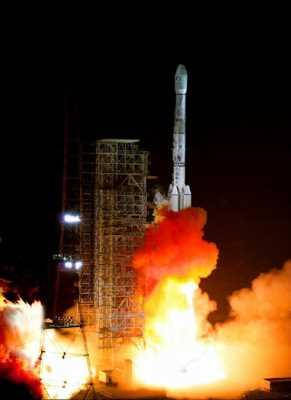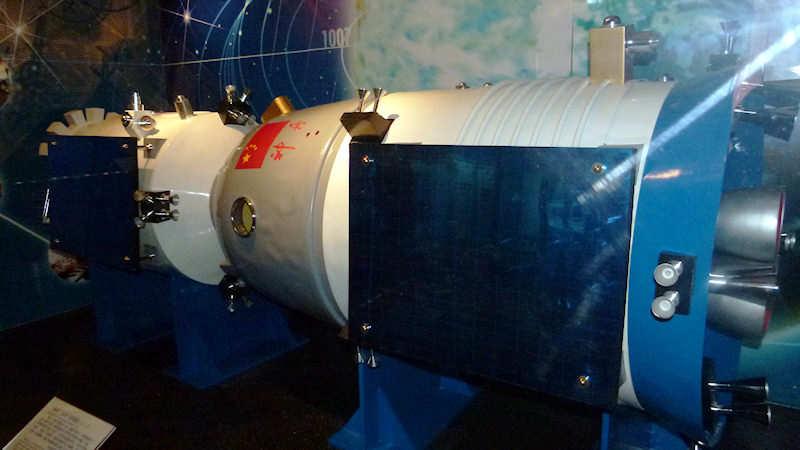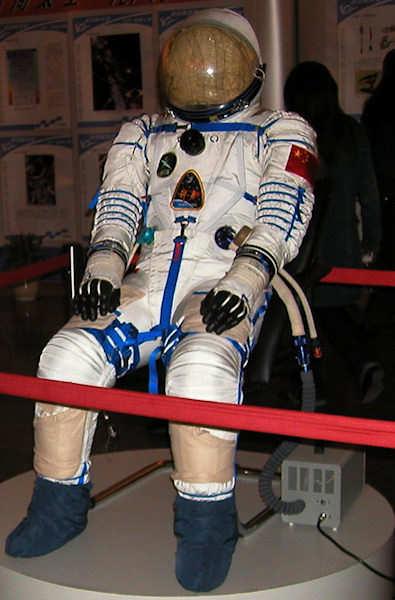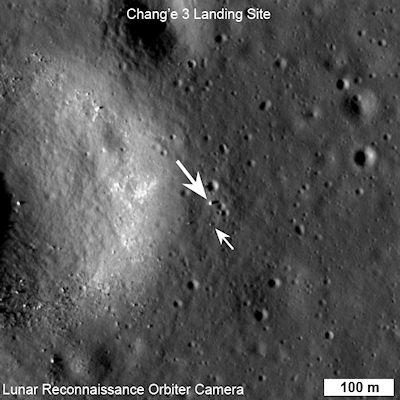China's ambitious plans for Space Exploration

The Chinese space exploration program is well under way. It is the most ambitious Chinese voyage of discovery since Zheng He set sail at the beginning of the Ming dynasty. Chinese Space pioneer, Wang Xiji has proclaimed that space is the ‘Fourth Great Territory’ after land, sea and air.
In the early years of the People's Republic, China followed its then ally the Soviet Union which had put Sputnik ➚ into space in 1957. The Sino-Soviet split put paid to a joint development plan and China shelved its program until 1967. Then, when the space race between the USSR and USA was at its height, China, rather quietly, continued rocket research and on April 24th 1970 China launched its first large satellite into orbit Dong fang hong yi 东方红一号 The East Is Red One.
This was followed up with an ambitious project Shuguang One 曙光一号 which aimed to launch people into space, however it was shelved in 1972 amidst domestic political turmoil.
Long March rockets
The next project concentrated on improving rocket launch technology. It did not have an exploration mission. The Long March rocket ➚ program (长征系列运载火箭) began in the 1980s and succeeded in launching a number of Chinese satellites. It also launched satellites for other Asian states as a commercial venture. It commemorates the Long March of 1935. The new Long March 7 rocket will carry cargo to the new Tiangong 2 space laboratory in 2017.
A significant impetus to China's space ambitions began when the China Aerospace Industry Corporation (National Space Bureau ➚) was founded in June 1993. By 1999 it had created a long term plan for space exploration and development. Project 921/1 was then renamed Shenzhou 神舟 meaning roughly Ship of the Heavens. It has progressed step-by-step, proving the technology is reliable before moving to the next stage. It was on 15th October 2003 that China launched Shenzhou 5 ➚ - its first manned orbit around the planet. The Chinese astronaut, Lt. Colonel Yang Liwei, spoke of China's ambitions in Space exploration with the aim of a moon landing. China had become only the third country to put people into space. The next rocket launch in the program was Shenzhou 6 on 12th October 2005 when two men were put into orbit for five days, returning safely to Earth. In 2008 Colonels Zhai Zhigang, Jing Haipeng , and Liu Boming undertook China's first three man mission in Shenzhou 7 神舟七号.

China's exploration of the Moon

The first mission under the Chinese Lunar Exploration Program was the unmanned Chang'e 1 which was launched on October 24, 2007 to orbit the moon (the 5th nation to do so). The series is named after Chang'e 嫦娥 after the Chinese goddess of the moon. It has made the most accurate map of the moon's surface ever produced during its 5,514 orbits before being deliberately crashed onto the Moon's surface on 1st March 2009.

Part of the plan is to build a Chinese space laboratory on the lines of the International Space Station ➚. On September 29, 2011, China launched Tiangong 1 ➚ ‘Heaven palace’ its first space lab, which has now been superseded by Tiangong 2 ➚, in 2016. After a change of plan the Tiangong-2 and Tiangong-3 projects were merged. The first part of Tiangong space station, 天河 tiān hé core module, was launched on 29 April 2021, from the Wenchang launch site and should be completed in 2022 and remain operative for ten years.
Chang'e 3 嫦娥三号 landed on the moon on 14th December 2013. It launched a rover called ‘Jade Rabbit’ 月兔 Yùtù that trundled around for a day or so before suffering an electrical failure. The rover is named after the legend that a rabbit lives on the moon.
In October 2014 an unmanned satellite ‘Xiaofei ➚’ orbited the moon and came back safely to Earth. The mission of Chang'e 4 was to land on the dark side of the Moon and send out a rover to investigate this forever hidden surface. It touched down on 2nd January 2019 ➚. The Yutu 2 ➚ rover has performed well and is now performing experiments such as growing plants in space for the first time. Cotton was the first plant to sprout ➚. It also has an orbiting lunar satellite 'Queqiao' launched in May 2018 that relays the information and commands from the lander and rover. This was a test of Chang'e 5 - scheduled for launch December 2019 ahead of a manned mission to repeat the same journey. Chang'e 5 ➚ made an unmanned moon landing and brought back 4 pounds [2 kgs] of soil samples to Earth on 16th December 2020. Chang'e 6 scheduled for 2023/24 was planned as a back up mission for Chang'e 5 and will perform the same tasks. Chang'e 6 and 7 and are scheduled for 2024 and 2027 and will perform more detailed surface scanning with an orbiter, rover and flying probe.
Although there is no officially announced dates it is expected that China will seek to land people on the moon in the 2030s, with maybe the establishment of a permanent settlement near the moon's south pole.

Onward to Mars
China is pushing head with exploration of Mars. The 天问 Tiān wèn-1 was launched from Wenchang on 23rd July 2020. It entered Martian orbit on 10th February 2021 and studied potential landing sites. On 14th May 2021 the lander reached the surface and will perform a range of scientific experiments. This makes China only the third nation after the US and Russia to land a probe on the surface. The lander is named 祝融 Zhù róng after the Chinese god of fire. Further plans are expected to be revealed after the manned lunar project has been completed.
China's Space research and bases
Tianjin has the Binhai Enterprise Zone center for research into space technology and the Harbin Institute of Technology has been traditionally strong in rocket and space technology.
China has a number of rocket launch centers. Jiuquan Satellite Launch Center, Inner Mongolia is the oldest and most heavily used; it launched Shenzhou 5 to Shenzhou 9. The Taiyuan Satellite Launch Center, Shanxi is mainly used for ballistic missile launch testing; while the Xichang Satellite Launch Center, Sichuan has launched satellites in the past including Cheng'e 1, but is to be superseded by the new Wenchang center. Wenchang Launch Center ➚, Hainan is the latest launch center to be developed. It is built on the coast allowing transport of the huge rockets by sea rather than over-land. Because it is so far south, nearer the equator, it enables the launch of heavier payloads into equatorial orbits.
Power stations in space
China has had ambitions to build large solar power stations ➚ in earth orbit that would then beam microwave energy to static receivers on Earth. The materials to build such satellite power stations could be mined from the moon and so avoid the huge expense and danger of launching them from Earth.